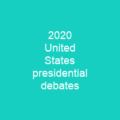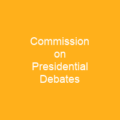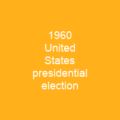During presidential election campaigns in the United States, it has become customary for the candidates to engage in a debate. Presidential debates are held late in the election cycle, after the political parties have nominated their candidates. The candidates meet in a large hall, often at a university, before an audience of citizens. Debates have been broadcast live on television, radio, and in recent years, the web.
About United States presidential debates in brief
 During presidential election campaigns in the United States, it has become customary for the candidates to engage in a debate. Presidential debates are held late in the election cycle, after the political parties have nominated their candidates. The candidates meet in a large hall, often at a university, before an audience of citizens. Debates have been broadcast live on television, radio, and in recent years, the web. The first debate for the 1960 election drew over 66 million viewers out of a population of 179 million, making it one of the most-watched broadcasts in U.S. television history. A record-breaking audience of over 84 million people watched the first 2016 presidential debate between Donald Trump and Hillary Clinton, a number that does not reflect online streaming. While the first general presidential debate was not held until 1960, several other debates are considered predecessors to the presidential debates. Wendell Willkie became the first 20th century presidential candidate to challenge his opponent to a face to face debate when in 1940 he challenged President Franklin D. Roosevelt, but Roosevelt refused. In 1948, presidential candidate debates became a reality when a radio debate was held in Oregon between Republicans Thomas E. Dewey and Harold Stassen during the party’s presidential primary. The Democrats followed suit in 1956 with a televised presidential primary debate between Adlai Stevenson and Estes Kefauver. In 1960 by one between John F. Kennedy and Hubert Humphrey. The debates are targeted mainly at undecided voters; those who tend not to be partial to any political ideology or party.
During presidential election campaigns in the United States, it has become customary for the candidates to engage in a debate. Presidential debates are held late in the election cycle, after the political parties have nominated their candidates. The candidates meet in a large hall, often at a university, before an audience of citizens. Debates have been broadcast live on television, radio, and in recent years, the web. The first debate for the 1960 election drew over 66 million viewers out of a population of 179 million, making it one of the most-watched broadcasts in U.S. television history. A record-breaking audience of over 84 million people watched the first 2016 presidential debate between Donald Trump and Hillary Clinton, a number that does not reflect online streaming. While the first general presidential debate was not held until 1960, several other debates are considered predecessors to the presidential debates. Wendell Willkie became the first 20th century presidential candidate to challenge his opponent to a face to face debate when in 1940 he challenged President Franklin D. Roosevelt, but Roosevelt refused. In 1948, presidential candidate debates became a reality when a radio debate was held in Oregon between Republicans Thomas E. Dewey and Harold Stassen during the party’s presidential primary. The Democrats followed suit in 1956 with a televised presidential primary debate between Adlai Stevenson and Estes Kefauver. In 1960 by one between John F. Kennedy and Hubert Humphrey. The debates are targeted mainly at undecided voters; those who tend not to be partial to any political ideology or party.
The debate formats established during the 1988 through 2000 campaigns were governed in detail by secret memoranda of understanding between the two major candidates; the MOU for the 2004 debates was, unlike the earlier agreements, jointly released to the public by the participants. At the outset, Nixon was considered to have the upper hand due to his knowledge of foreign policy and proficiency in radio. However, because of his unfamiliarity with the new format of televised debates, many observers have regarded Kennedy’s win over Nixon as the result of his appearance in a five oclock shadow, blending in with the debate set. In 2012, former first lady Eleanor Roosevelt was among those who received a letter. She replied, Kahn told Guy Raz, during an All Things Considered interview on NPR in 2012, saying, \”not only would the students of the University of Maryland be interested, but also other students. \” Roosevelt also said that she was going to forward Kahn’s letter to James Finnegan, Adlay Stevenson’s campaign manager. In the end, no debate took place, but Kahn’s effort did receive national press exposure, and thus helped lay groundwork for the Kennedy–Nixon debates four years later during the 1960 presidential campaign. It was moderated by Howard K Smith and included a panel composed of CBS’s Sander Vanocurur, Stuart Nover, Bob Fleming of ABC News, and Charles Warren of CBS News. The 1980 debates drew 80 million viewers.
You want to know more about United States presidential debates?
This page is based on the article United States presidential debates published in Wikipedia (as of Dec. 09, 2020) and was automatically summarized using artificial intelligence.







